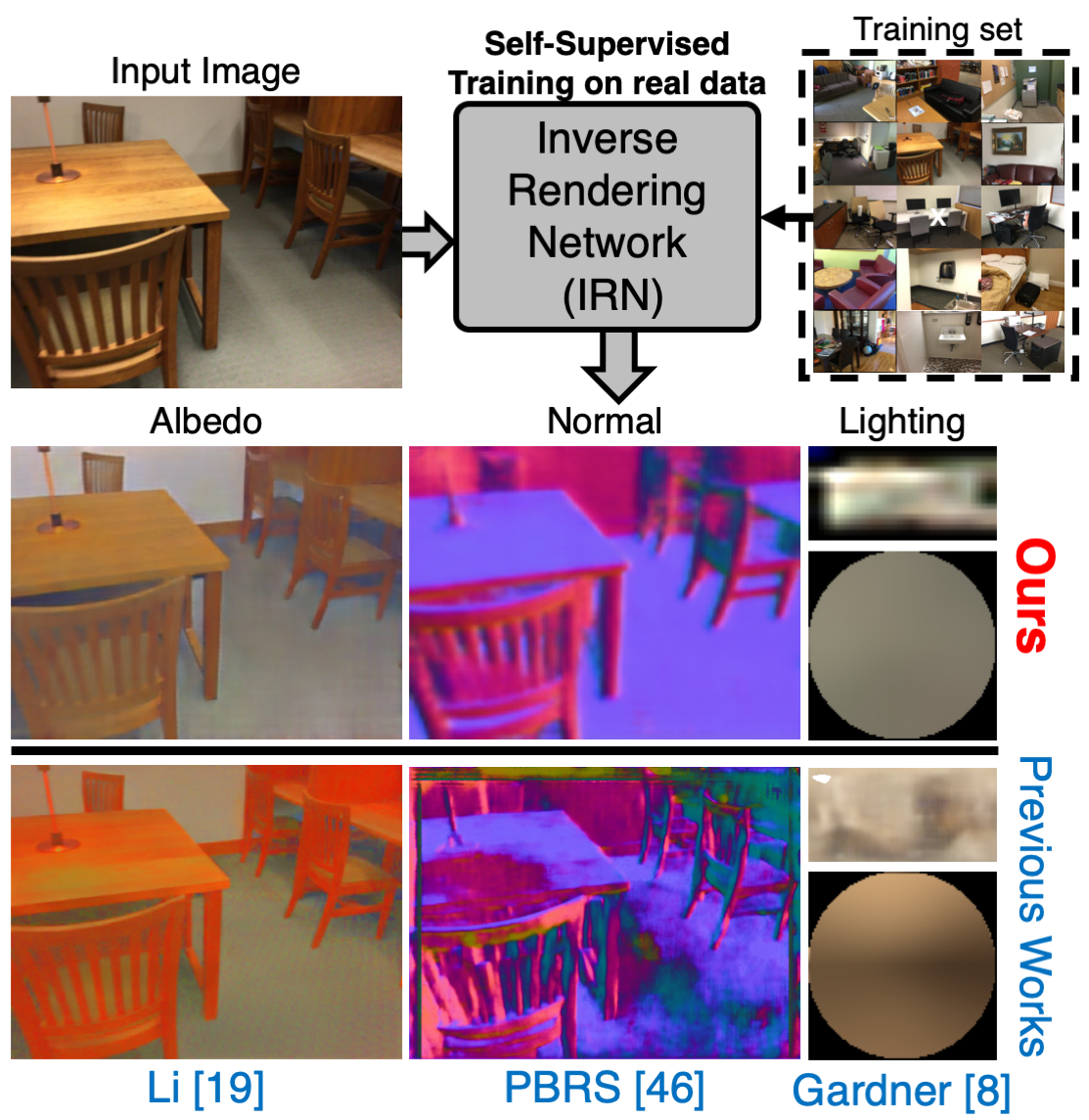
|
|
|
|
|
|
|
|
University of Maryland, College Park University of Washington |
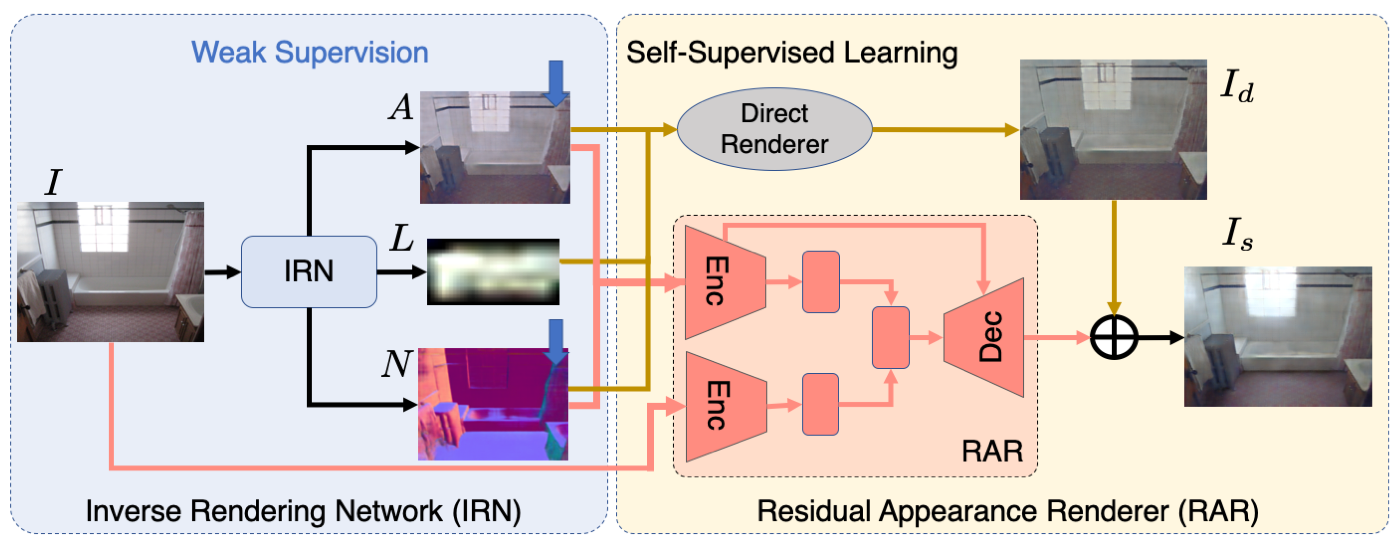 |
Soumyadip Sengupta, Jinwei Gu, Kihwan Kim, Guilin Liu, David W. Jacobs, Jan Kautz. Neural Inverse Rendering of an Indoor Scene From a Single Image In ICCV 2019. |
| Overview of our approach. Our Inverse Rendering Network (IRN) predicts albedo, normals and illumination map. We train on unlabeled real images using self-supervised reconstruction loss. Reconstruction loss consists of a closed-form Direct Renderer with no learnable parameters and the proposed Residual Appearance Renderer (RAR), which learns to predict complex appearance effects. |
|
|
|
|
 Comparison with Zhang et. al. |
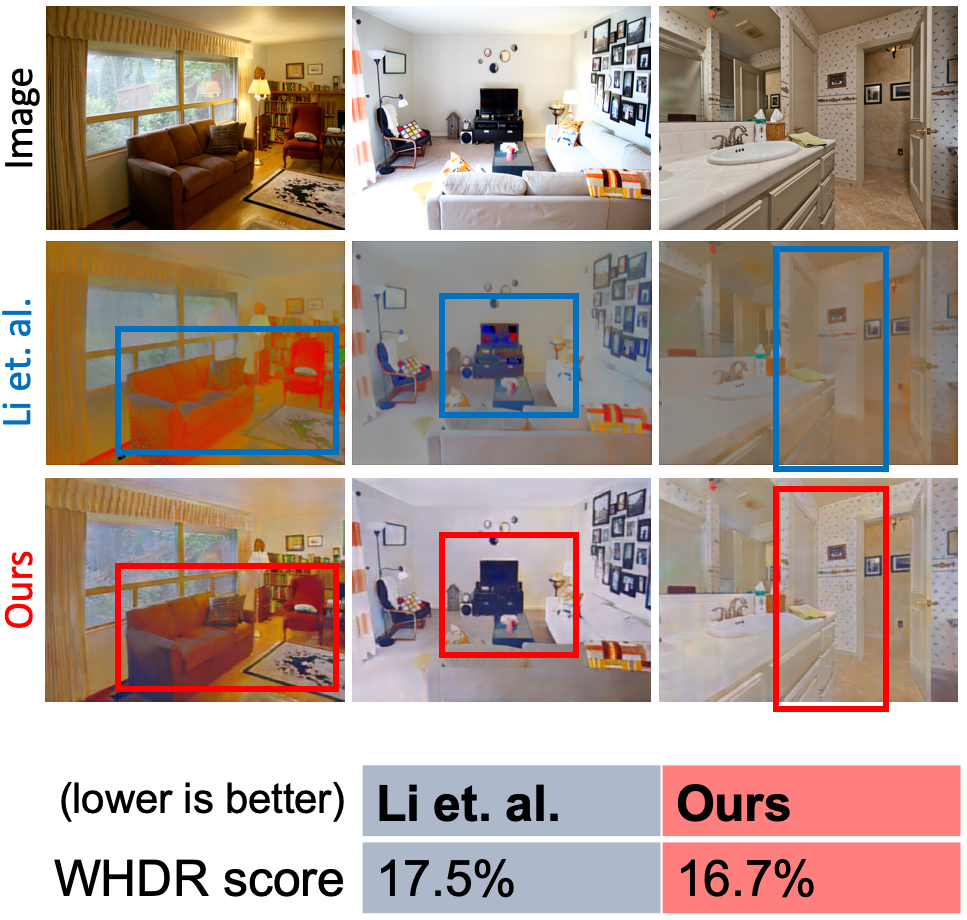 Comparison with Li et. al. |
|
|
|
|
 Comparison with Gardner et. al. |
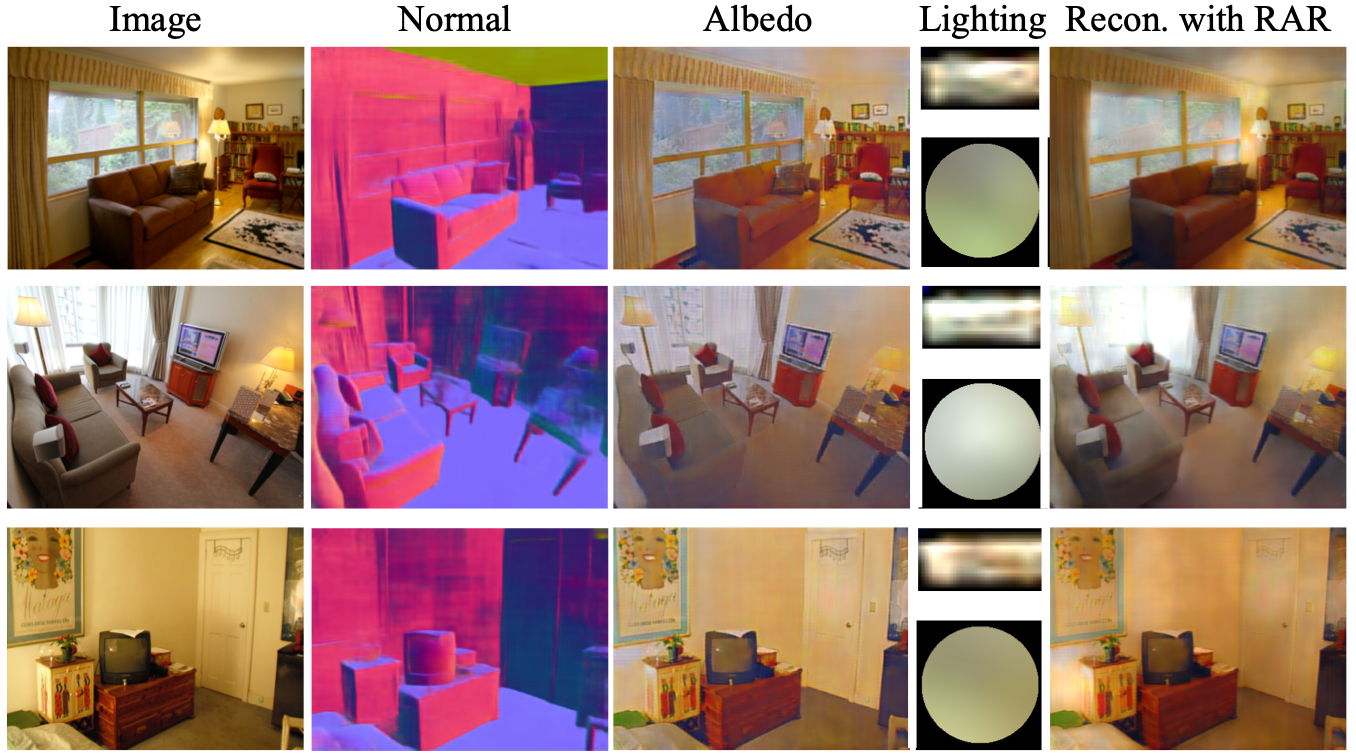 |
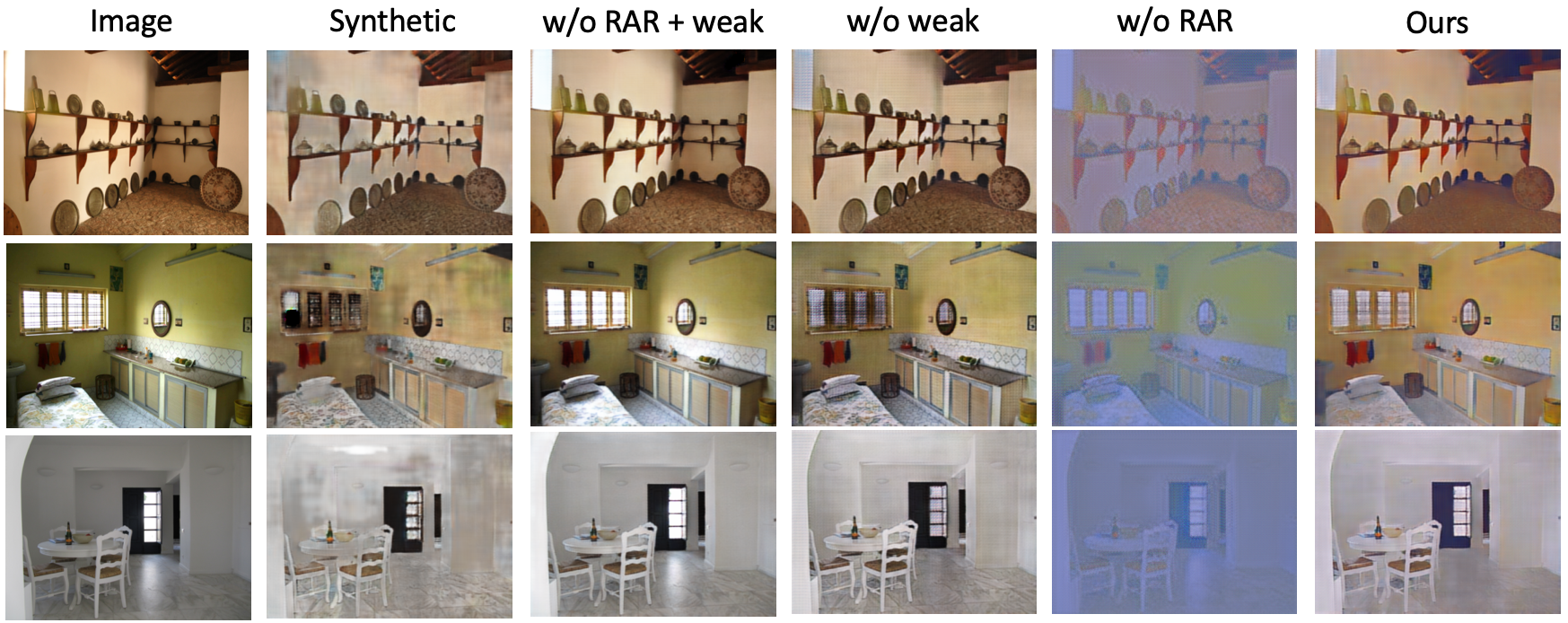
Acknowledgements |